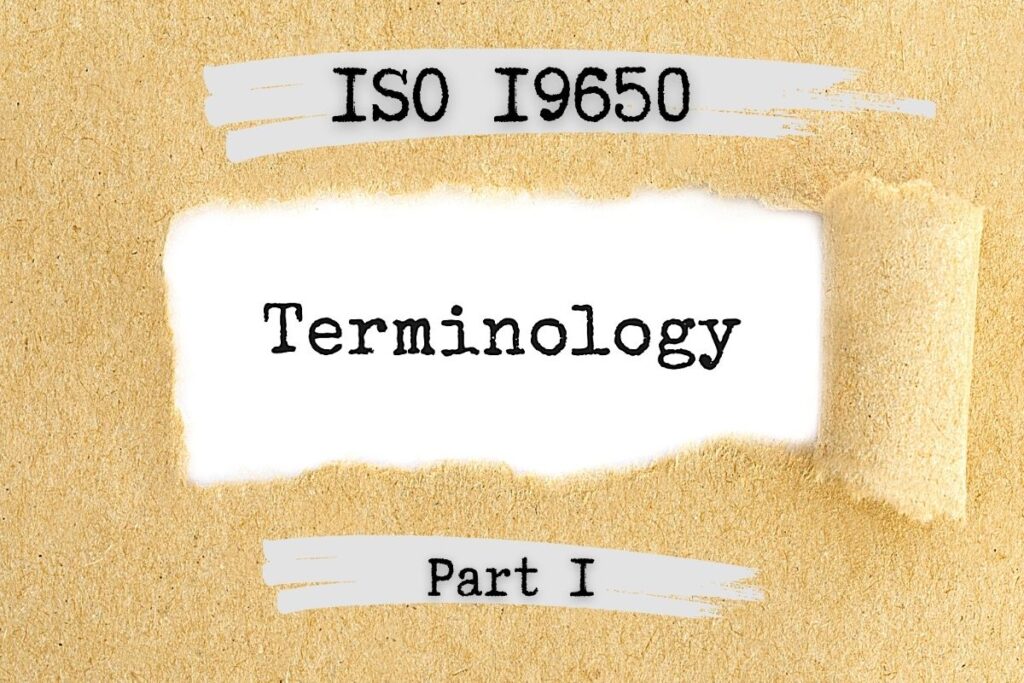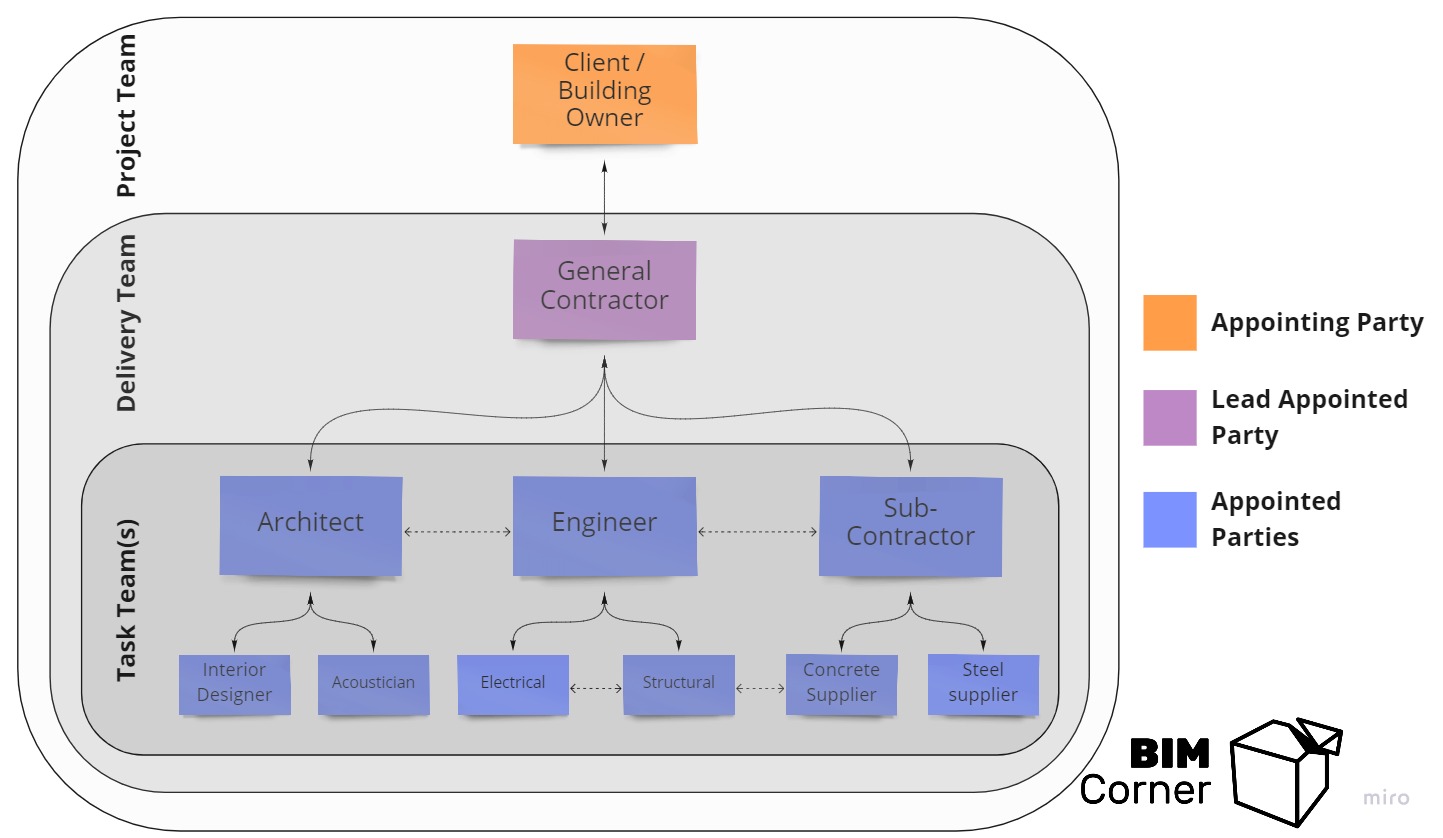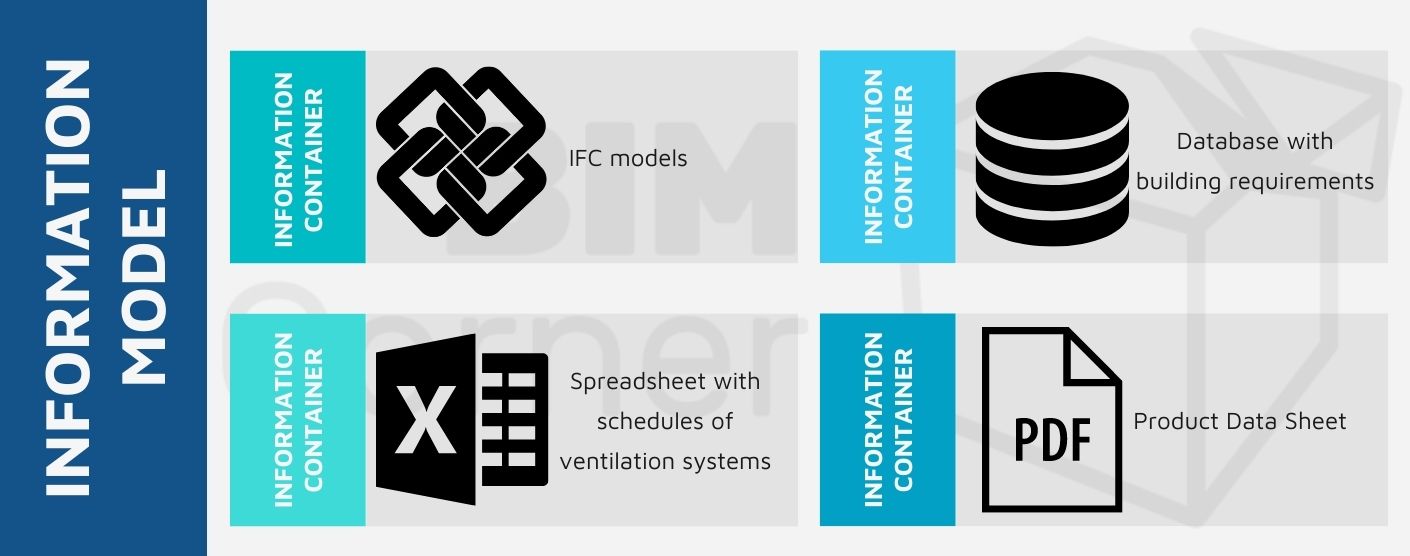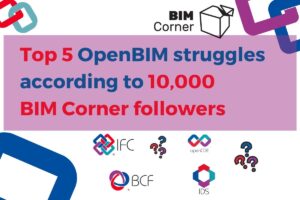As if it had been yesterday, I remember this feeling of uncertainty every time I encountered websites with ISO 19650 related terms. Pages full of EIRs, OIRs, PIRs, Appointing Party, Appointed Party, Information containers, LoIN and more of shortcuts and misty definitions. I didn’t fancy this feeling and wouldn’t wish it on anyone. That’s why I decided to study through ISO 19650 and its terms, guidance, booklets and articles, then mix it with my own experience and serve you a two-dish light meal of explanation of terms and expressions from International Standard. Here comes entrée. Bon appétit!
This entry will relate and supplement one of our older posts: 22 terms in BIM you should know. In the post, however, I will cover some other definitions and describe types of information requirements in humanly understandable language (in contrary to ISO language🙊).
The list is not comprehensive – there are more abbreviations and terms. I have picked the terms that either create confusion or occur frequently.
I structured this post in such a way that first I explain the definition from ISO 19650 and afterwards I come up with an example. Please also bear in mind that I am not an ISO-certificated specialist. As usual, a discussion is always more than welcome
Table of Contents
List of equivalent terms in PAS 1192 and ISO 19650
ISO 19650 mostly bases on the older British Standard PAS 1192, nevertheless International Standard introduces some new concepts. Though many terms are exactly the same, some are changed in naming, but means the same. Below you will find a table with a list of equivalent terms
| PAS 1192 term | ISO 19650 term |
|---|---|
| Supplier | Appointed party |
| Employer, Client, asset owner, operator | Appointing party |
| Contract, professional services agreement | Appointment |
| Employer’s Information Requirements | Exchange Information Requirements |
| Level of Definition (which is aggregate of Level of Detail and Level of Information) | Level of Information Need |
Terms in ISO 19650 related to project stakeholders
In this chapter, I will name and describe all terms related to all project stakeholders and different teams in the project. How the standard call the client, how designer and how contractor? And what does deliver a delivery team? Read below.
Appointing party
In other words: a client, building owner or an end-user – owner of the project. The Appointing Party is receiving and/or managing all the information as well as work and goods provided by the other project stakeholders.
Responsibilities of an appointing party:
- Creating the Project’s Information Requirements (PIR – explanation in the next part) and project standards,
- Establishing procedures for creation and delivery of information,
- Preparing correct handover of the existing information to the Delivery Team (explained below) necessary for the correct project delivery,
- Establishing Common Data Environment for the project,
- Capturing lesson learned with the lead appointed party.
Lead Appointed Party
This party is assigned directly by the client, and takes the role of a coordinator between the Delivery Team and the Appointing Party. It can assign tasks further to its appointed parties.
In practice, Lead Appointed Party depends on the delivery method for the project. In Design & Build delivery it is the General Contractor who takes all responsibility and coordination roles. Though in Design-Bid-Build (Traditional delivery method) there might be one Lead Appointed Party for design works (e.g. Architect office) and another Lead Appointed Party for construction (General Contractor).
Responsibilities of a Lead Appointed Party:
- Establishing BIM Execution Plan,
- Creating a party’s own information requirements in addition to those, set by appointed party in a document called Exchange Infomation Requirements (explained in the next part),
- Creating Master Information Delivery Plan (coming in the next part),
- Formulating information requirements down to each and every appointed party,
- Preparing and assigning resources (people, processes and technology) within the Delivery Team,
- Creating contract documents for each appointed party,
- Managing and supervising the progress of the information model (explained below) done by the delivery team,
- Checking if provided information model meets the requirements set by the appointing party,
- Capturing lessons learned with each of the appointed parties.
Appointed Party
In other words: designers, contractors, suppliers, vendors. All parties responsible for creating and providing information, work or goods according to the contract (appointment) with the Lead Appointed Party.
Responsibilities of an Appointed Party:
- Helping the lead appointed party with creating BIM Execution Plan,
- Agree which information and when should be produced by each appointed party,
- Establishing task information delivery plan(s) across the task team,
- Collaborative creation of information according to the information standard and requirements,
- Taking part in the review of the information model (explained below).
Project team
All parties involved in the delivery process of an asset. A part of the project team is both a party receiving information (Appointing Party) as well as parties creating information (Lead Appointed Party and Appointed Parties).
Delivery team
All stakeholders responsible for the creation of information. The delivery team comprises Lead Appointed Party and their Appointed Parties. Depending on the contract type it might be only one delivery team or multiple.
Task team
The team within the Delivery team (it might be also one person) responsible for performing a specific task. For example a structural designer or a contractor with its subcontractors and suppliers.
In the picture above you can see how I would structure the above-mentioned terms. Appointing party is the client/building owner who wants to build an asset (building) and has requirements. He appoints the Lead Appointed Party, which might be one or many. Lead Appointed Party commissions Appointed Parties.
Appointed Parties divide into Task Teams that are responsible for performing a specific task. For instance, an Engineering company has a Task Team responsible for structural calculation and for structural models. In fact, the Task Team can as well be one person – for example, an acoustician commissioned by an architectural company.
Both Appointed Parties and Task Teams cooperate among and between each other during the Information Delivery Phase (designing and construction of the building). Together with the Lead Appointed Party, they establish the Delivery Team. If we want to name every stakeholder involved in the process we use the term Project Team.
Terms in ISO 19650 related to Information
Information
Any data presented in an agreed way that can be understood, processed and communicated.
In practice, according to ISO 19650 terms, Information is namely bearing beam drawing or door DE-01 in the doors schedule.
Information Container
As ISO 19650 term, Information Container is any form of unique file. Consequently, this might be a file with structured information (containing metadata, e.g. geometrical models, schedules) or unstructured (information with no metadata, such as pdf documents, scans, photos, videos). Each information container should be identified by a unique ID and metadata such as status, revision and classification. I illustrated this in details in the entry about the CDE process.
In practice, an information container may be as well an ArchiCAD model, an Excel spreadsheet or Product Data Sheet.
Information Model
It is a set of information containers, both structured and unstructured. Additionally, the process of composing information containers is called federation. As a matter of fact, an information model is not only a geometrical model federated from different IFC files in Solibri. It is a collection of different information containers, both graphical as well as non-graphical (databases, spreadsheets, etc.) and documents.
In practice, an information model in an early design phase may consist of an architectural Revit model, dRofus database with room requirements connected to model and drafted schedule of ventilation and electrical systems in Excel spreadsheet.
Project Information Model (PIM)
It is an information model (i.e. set of information containers as discussed above) that provides all the data required to carry out the delivery phase of an asset. That is when an asset (building) is designed, constructed and commissioned. PIM resides in the project’s Common Data Environment and the collection of its information responds to the requirements set out by the Appointed Party in Exchange Information Requirements. It consists of all sorts of information containers: models, databases, spreadsheets and documentation.
The amount of different data (information containers) in PIM augments gradually together with the development of the delivery process. In the brief phase, it may comprise only the scheme architectural model and some spreadsheets with requirements. Then further in the design or construction phase, it may contain a vast amount of information.
In practice, Project Information Model is all relevant data that sits in the Project’s Common Data Environment platform. PIM lasts as long as the project continues to develop.
Asset Information Model (AIM)
It is an information model that provides all the data required to carry out the operation phase of an asset (in contrast to PIM which provides data for delivery phase).
At the end of the project, some elements of the Project Information Model are transferred into the Asset Information Model and unnecessary data (residual project information) is archived. AIM comprises graphical models, non-graphical data and all necessary maintenance, operation and management documentation for objects in the model. Appointing party, end-users and facility managers create and use Asset Information Model, during the operational phase of the asset.
Creation and structure of data in AIM should enable transfer to computer-aided facility management systems (CAFM), COBie, or another format for later management of the building. Requirements to the format of the deliverables should be agreed beforehand in Exchange Information Requirements.
In practice, AIM comprises all files and data that the Delivery Team gives to the Appointing Party during the handover after completion of the project. Building Owner uses that information to set up a Facility Management system and operate the building.
Summary
On the whole, I hope you understand the basic terms that shape ISO 19650 and further reading of other BIM-related articles is going to be easier. I did my best to present and show examples of all those enigmatic terms from the standard that actually means something absolutely understandable for each of us (information container? It’s merely a file with a unique ID 🙂).
If you happen to struggle with understanding those terms – let me know in the comments, I’ll help!
Resources
- ISO 19650
- UK BIM Guidance to ISO 19650
- https://www.thenbs.com/
- www.designingbuildings.co.uk/












Hi Konrad, many thanks for this description. I just want to clarify with someone outside of my team, as we are developing BIM terms for Croatia. “Lead appointed party” – do you see it as a company or can be person (as there is different regulation regarding responsibilities through EU and worldwide, it could be confusing. As far as I see it, as this party coordinates etc., it could be person, BIM manager?
Hi Konrad, many thanks for this description. I just want to clarify with someone outside of my team, as we are developing BIM terms for Croatia. “Lead appointed party” – do you see it as a company or can be person (as there is different regulation regarding responsibilities through EU and worldwide, it could be confusing. As far as I see it, as this party coordinates etc., it could be person, BIM manager?
Hi Konrad, many thanks for this description. I just want to clarify with someone outside of my team, as we are developing BIM terms for Croatia. “Lead appointed party” – do you see it as a company or can be person (as there is different regulation regarding responsibilities through EU and worldwide, it could be confusing. As far as I see it, as this party coordinates etc., it could be person, BIM manager?
Hi Maja and thanks for the question!
Who is a “Lead Appointed Party” depends heavily on what type of contract it is. If this is Design-Bid-Build, this can be a consultant or different companies depending on the stage.
If this is Design-Build, this is normally General Contractor. If this is Construction Management, then the Lead Appointed Party is an internal team from Building Owner or an external consultant company.
I would say that Lead Appointed Party has to be a company since they have to develop the project and take responsibility for that. BIM Manager is merely a management role inside the BIM process. And this is a tiny part of the whole construction process we are talking about here.
Let me know if this answer satisfies your inquiry!
Hi Knorad,
Under a design and build contract would there be more than 1 Lead appointed party? One at design stage and one at construction stage?
Hi Martin!
In design&Build type of contract, it is usually the General Contractor who takes the sole role of the Lead Appointed Party. It is his responsibility to appoint a designer and other parties.
Konrad – As usual another very useful post – Thank you. Please note that the management tree is never as well structured as practitioners/professionals believe, as there is one more body who could become involved into the upper echelon of ‘Parties’, engaged by, or, on behalf of the Appointing Party = A Third Party = a body who holds the authority to undertake an activity or set of activities on behalf of the Appointing Party in lieu of their inability to proceed due to: inadequate in-house resources/capability/expertise, etc,.
Hey Les, thanks for comment. I agree, the third parties are often involved as consultants. And depending who they provide their service to, I would place them in that place of the management tree.